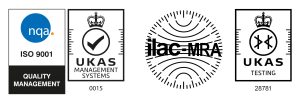UN Fibreboard Box For Lithium Batteries 4G/X13/S
Internal Dimensions: 250mm x 145mm x 145mm
UN Fibreboard Box for Lithium Batteries 4G/X13/S
Internal Dimensions: 350mm x 200mm x 200mm
UN Fibreboard Box for Lithium Batteries 4G/X13/S
Internal Dimensions: 450mm x 300mm x 300mm
UN Plywood Box for Non-specific inners, 4DV/X30/S
Internal Dimensions: 370mm x 370mm x 300mm
UN Plywood Box for Non-specific inners, 4DV/X56/S
Internal Dimensions: 580mm x 380mm x 385mm
UN Plywood Box for Non-specific inners, 4DV/X107/S
Internal Dimensions: 780mm x 380mm x 585mm
UN Plywood Box for Non-specific inners, 4DV/X175/S
Internal Dimensions: 980mm x 580mm x 585mm
UN Plywood Box for Non-specific inners, 4DV/X280/S
Internal Dimensions: 1180mm x 780mm x 785mm
 UK
UK




